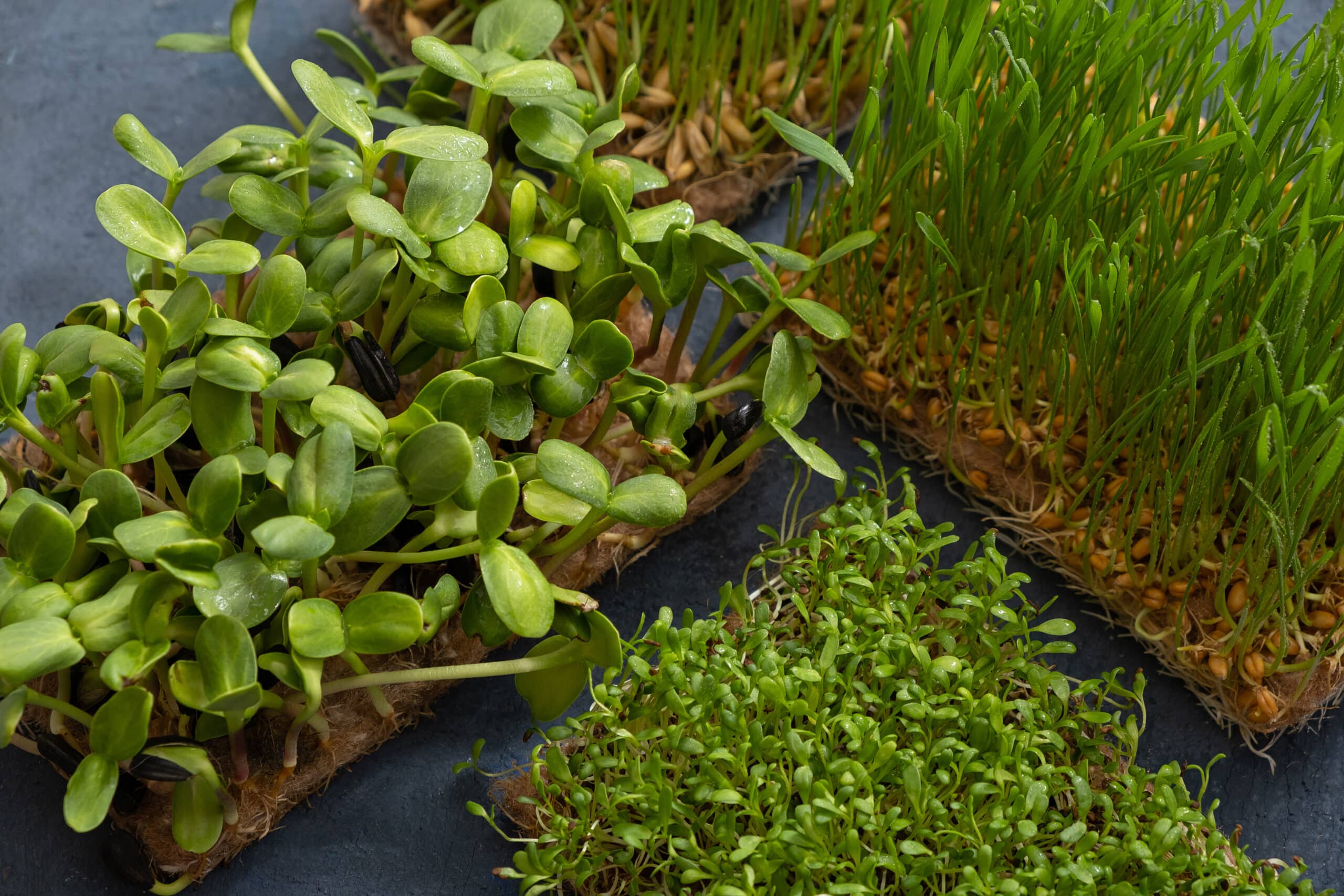What Vegetables are Microgreens?
Key Takeaways
- Microgreens are young, tender plants that are harvested at an early stage of growth and are packed with flavor, nutrition, and visual appeal.
- There are over 80 types of microgreens commercially available, each with its own unique flavor profile and culinary uses.
- Not all vegetables are suitable for microgreens, and some vegetables from the nightshade family should be avoided as they are considered toxic when consumed as microgreens.
Microgreens are young, tender plants that are harvested at an early stage of growth, typically when they have developed their first true leaves. These tiny greens pack a punch when it comes to flavor, nutrition, and visual appeal, making them a popular choice for garnishing and adding a burst of freshness to dishes.
So, what vegetables can be grown as microgreens? Let’s explore the extensive list of vegetables suitable for microgreen cultivation.
Adzuki Bean
The adzuki bean is a small, red bean commonly used in Asian cuisine. When harvested as microgreens, they add a delightful crunch and a slightly nutty flavor to salads and stir-fries.
Alfalfa
Alfalfa microgreens are known for their mild, fresh taste and delicate texture. They are rich in vitamins and minerals, making them a nutritious addition to sandwiches, soups, and smoothies.
Amaranth (Garnet Red)
Amaranth microgreens, specifically the Garnet Red variety, are visually stunning with their vibrant red stems and green leaves. They have a slightly earthy and nutty flavor, making them a great addition to salads and grain bowls.
Anise
Anise microgreens have a distinct licorice-like flavor that adds a unique twist to dishes. They are often used as a garnish for desserts, cocktails, and savory dishes like seafood and roasted vegetables.
Arugula
Arugula microgreens, also known as rocket, have a peppery and slightly bitter taste. They are commonly used as a salad green or added to sandwiches, pizzas, and pasta dishes to add a flavorful kick.
Asparagus
Asparagus microgreens are a delicate and tender variety with a mild asparagus flavor. They can be used as a garnish or added to salads, soups, and omelets for a fresh and vibrant touch.
Barley
Barley microgreens are known for their sweet and nutty flavor. They are often used in grain bowls, salads, and sandwiches to add a crunchy texture and a hint of sweetness.
Basil
Basil microgreens offer a concentrated version of the classic herb’s flavor. They are commonly used in Italian dishes, such as caprese salads, pasta sauces, and pesto.
Beet (Yellow Beet)
Yellow beet microgreens have a milder flavor compared to their mature counterparts. They add a vibrant pop of color and a subtle earthy taste to salads, sandwiches, and smoothies.
The above list is just a glimpse into the world of microgreens. In reality, there are over 80 types of microgreens commercially available, each with its own unique flavor profile and culinary uses. Some of the other popular vegetables suitable for microgreens include radishes, broccoli, mesclun, beetroot, cress, carrots, peas, sunflower, amaranth, buckwheat, mustard, sorrel, wheatgrass, and alfalfa.
It is important to note that not all vegetables are suitable for microgreens. Some vegetables from the nightshade family, such as eggplant, bell pepper, white potato, tomatillo, and tomato, are considered toxic when consumed as microgreens and should be avoided. Additionally, it is crucial to practice food safety guidelines when growing and consuming microgreens to prevent foodborne illnesses.
Related Websites:
FAQs:
Q: What are microgreens?
Microgreens are young vegetable plants that are harvested just after the first leaves have developed. They are packed with nutrients and have intense flavors and vibrant colors, making them a popular choice for adding taste and texture to dishes.
Q: Why have microgreens gained popularity in recent years?
Microgreens have gained popularity due to their high nutritional value, unique flavors, and ability to enhance the visual appeal of dishes. They are also easy to grow at home and provide a convenient way to incorporate fresh, nutrient-rich vegetables into any diet.
Q: What types of vegetables can be grown as microgreens?
A wide variety of vegetables can be grown as microgreens, including leafy vegetables like spinach, kale, arugula, lettuce, chard, and mustard greens. Herb vegetables such as basil, cilantro, parsley, dill, and mint are also suitable for microgreen cultivation. Additionally, brassica vegetables like broccoli, cabbage, cauliflower, radish, and kale can be grown as microgreens.
Q: What are the unique flavors and aromas provided by herb vegetables as microgreens?
Herb vegetables like basil, cilantro, parsley, dill, and mint provide distinct flavors and aromas when grown as microgreens. They add a refreshing and aromatic touch to dishes, enhancing the overall taste experience.
Q: What are the nutritional benefits and flavors of brassica vegetables as microgreens?
Brassica vegetables such as broccoli, cabbage, cauliflower, radish, and kale offer a range of nutritional benefits when grown as microgreens. They are rich in vitamins, minerals, and antioxidants. These microgreens also have distinct flavors, ranging from mild and earthy to slightly spicy, adding depth to various dishes.






